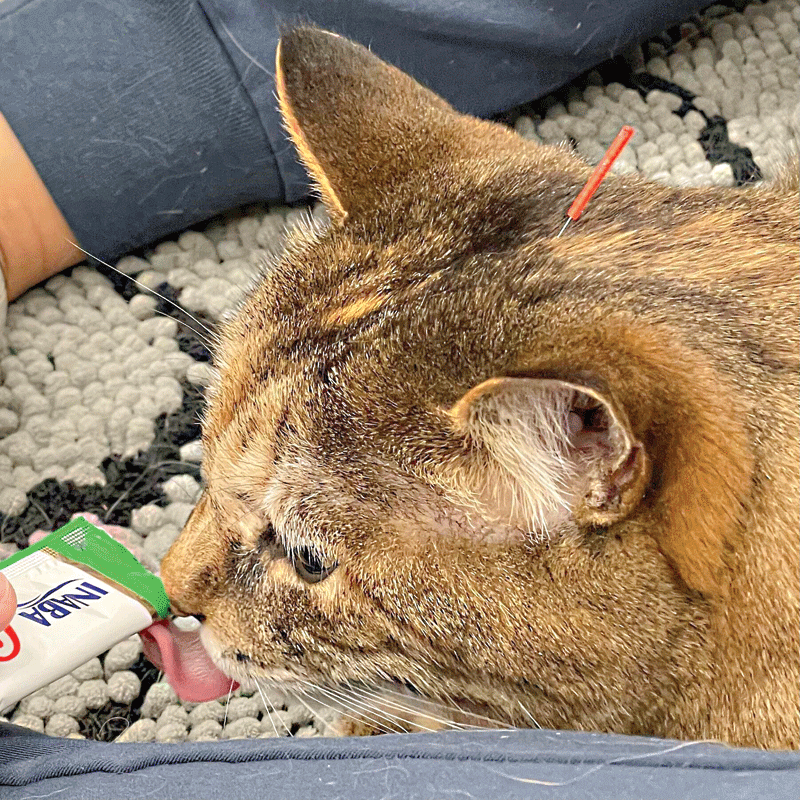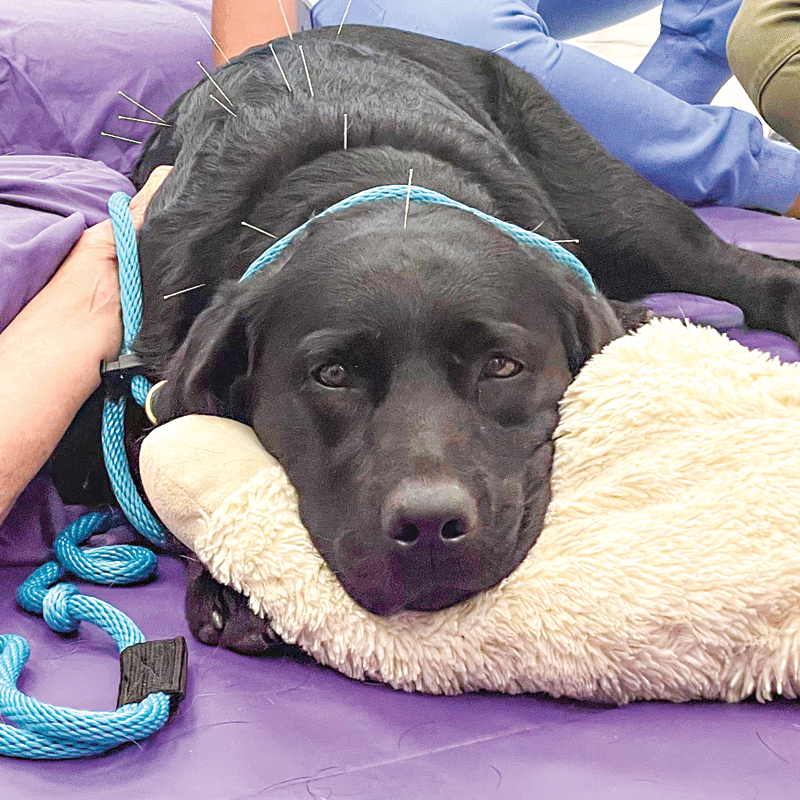
Photos courtesy Narda Robinson
You may have heard a lot lately about monoclonal antibodies (mABs) for osteoarthritis (OA) pain. These agents inhibit a nerve growth factor (NGF), a molecule located in the peripheral nervous system that can contribute to neurogenic inflammation. The term “neurogenic” inflammation points to the nervous system as a key cause of the redness, pain, heat, swelling, and loss of function found in inflammatory conditions such as OA. Thus, by neutralizing NGF with highly specific mABs, researchers argue this helps control or eliminate a significant source of pain and discomfort of OA.
Given the enthusiasm for a method of treatment for OA other than traditional NSAIDs, more practitioners have become curious about what other approaches might exist. Many have turned to scientific integrative medicine therapies, which offer more than just anti-inflammatory benefits. That is, most pharmaceuticals for OA focus on inflammation, but the disease affects more than just joints. In fact, patients face a constellation of hurdles, including joint stiffness, myofascial dysfunction, tissue hypo-oxygenation, general lassitude and deconditioning, postural abnormalities, weight gain, and organ compromise from prolonged inactivity.
In contrast to pharmaceuticals, for example, medical acupuncture addresses several of the factors associated with both the onset and perpetuation of OA. Researchers are beginning to see OA as a neurologic disease, not just an arthrodial condition.
Instead of acting merely as passive hinges that respond to load and allow movement, diarthrodial joints constitute “complex organ systems consisting of diverse tissues, intricate physiological processes, and tightly regulated homeostatic feedback mechanisms.”1 Further, “The maintenance of joint health is predominantly under the control of an extensive and elaborate nervous system that meanders throughout the joint innervating multiple tissues.”1
But, what does this have to do with medical acupuncture?
Understanding OA
One of acupuncture’s main mechanisms of action involves keeping the nervous system balanced. While the central, peripheral, and autonomic nervous systems already have extensive intrinsic capacities for self-regulation, they sometimes cannot continue to effectively counter all the external and internal challenges they experience. Over time, the distance from where someone is versus where they should be, in terms of health and homeostasis, may grow ever longer.
With OA, disease develops incrementally. Perhaps a dog or cat developed tension in its tissues after a fall, a bout of roughhousing, or daily run on a leash attached to an overly ambitious human. Given enough of these instances, or a severe enough episode, that tense muscle tissue may not relax back to its original length.
Over time, myofascial restriction could spread and compresses sensory nerves, impeding afferent signals from reaching the spinal cord and brain. This averts the nervous system’s innate ability to modify joint loading and avoid damage based on the signals it receives from the periphery. Or, perhaps as a primary problem in the central nervous system, an early compressive myelopathy is interrupting effective neural coordination between the brain and periarticular stabilizers. Even autonomic contributors, such as emotional stress and exhaustion detract from effective neuromotor signal streams and raise the risk of joint damage even more. Whatever the inciting factor/s, a neural network that has lost its ability to coordinate locomotion sets the stage for local joint injury and its ensuing ramifications body wide.
Further, evidence indicates arthrodial disease leads to both structural and functional alterations in the central nervous system, secondary to neuroplastic changes within pain pathways.2 Consequently, the central nervous system, along with the presence of persistent pain, both suppress outgoing motor output by activating inhibitory pathways. Maladaptive motor control may manifest as anomalous joint loads; these, then, accelerate tissue damage, contributing to further challenges to efficient, effective movement and pain-free activity.
How acupuncture helps
Medical acupuncture addresses the pain and pathology of OA by neuromodulating, (i.e. helping to normalize function in the central, peripheral, and autonomic nervous systems.3,4) These mechanisms of action match the mechanisms of the disease of OA. In addition, acupuncture improves mechanical signaling through the fascia, an expanding area of scrutiny within the integrative medical community. By improving nerve communication within and throughout the fascia, acupuncture facilitating the spread of, and adjustment to, mechanical forces traveling via connective tissue planes.5
Medical acupuncture, in contrast to myth-based styles, focuses treatment on contemporary, anatomically relevant treatment rationales. Practitioners develop needling protocols in light of the location/s of the problem(s), anatomic associations of acupuncture points, and neurophysiologic aspects of the illness. Treatments activate endogenous homeostatic responses that aid in restoring healthful nervous system function to the degree possible.
From a research perspective, acupuncture is far from merely a placebo. In one study, verum acupuncture resulted in less pain and better function, compared to sham acupuncture, in a multicenter, randomized, controlled trial for patients with knee osteoarthritis.6 Results persist over time and “cannot be explained solely in terms of placebo effects.”7
Other integrative aids

Other integrative measures, alone or combined with acupuncture, provide benefits for patients with OA. Physiotherapy, like acupuncture, results in pain relief, improved functional status, and elevated quality of life in patients with knee osteoarthritis.8 Physiotherapy, however, comprises several modalities, many of which overlap with acupuncture. One of these treatments, photomedicine (i.e. laser therapy) exhibits a particularly notable benefit in cases of OA (i.e. the ability to increase cartilage thickness).9
While some researchers contend that active, supervised, therapeutic exercise outshines passive treatments,10 pain needs to be addressed and controlled before we can expect patients to exercise regularly and sufficiently. Scientific, integrative treatments may, in fact, reduce pain more fully and with fewer risks than many commonly prescribed analgesic medications.
Massage, for example, has a rational foundation, evidence of effectiveness, and a high safety profile. Patients typically respond to this group of therapies in a positive manner, as long as the practitioner approaches the patient with a gentle and reassuring manner and tailors the treatment to the patient’s tolerance and demeanor. Massage can be particularly well-received, and has the well-known advantage of reducing stress, anxiety, and pain.11
Pulsed electromagnetic field (PEMF) therapy, too, serves as a non-pharmacologic analgesic. PEMF delivers electric and magnetic fields to patients’ tissues by means of inductive coils.12 The U.S. Food and Drug Administration (FDA) has approved PEMF for the treatment of non-union fractures; the FDA has cleared PEMF devices for post-operative pain and edema, osteoarthritis, and plantar fasciitis. While a comprehensive explanation of the mechanisms of action, history, device taxonomy, clinical evidence, and veterinary medical trends for PEMF extends beyond the scope of this column, PEMF treatment is rapidly growing in popularity and advocacy by pain medicine practitioners.
One of the biggest advantages of treatments such as PEMF, photomedicine, therapeutic exercise, and massage is the capacity of motivated, educated clients to treat animals at home and thereby participate in their animal’s healing process. This, in turn, lengthens the time between acupuncture treatments needed to maintain improved quality of life and return to function.
As a whole and on their own, these non-drug, non-invasive approaches deliver restorative, regenerative, and recuperative benefits to patients. They protect and modulate neural function, instead of inhibiting it. Why not begin with a multimodal integrative treatment plan that strengthens and calms, instead of adding it after all other drugs have failed?
Narda Robinson, DO, DVM, MS, FAAMA, practices osteopathic medicine and veterinary medicine. Dr. Robinson taught science-based integrative medicine at the Colorado State University College of Veterinary Medicine and Biomedical Sciences for 20 years. In 2016, Robinson established her own academy in Fort Collins, CO, where she teaches medical acupuncture, integrative rehabilitation, medical massage, and other integrative medical approaches.
References
- McDougall JJ. Review. Osteoarthritis is a neurological disease – a hypothesis. Osteoarthritis and Cartilage Open. https://pubmed.ncbi.nlm.nih.gov/36474723. (2019). 100005.
- McDougall JJ. Review. Osteoarthritis is a neurological disease – A hypothesis. Osteoarthritis and Cartilage Open. https://pubmed.ncbi.nlm.nih.gov/36474723. (2019). 100005.
- Li Y, Yang M, Wu F, et al. Mechanism of electroacupuncture on inflammatory pain: neural-immune-endocrine interactions. J Tradit Chin Med. 2019;39(5):740-749. https://pubmed.ncbi.nlm.nih.gov/32186125/
- Mawla I, Ichesco E, Zöllner HJ, et al. Greater somatosensory afference with acupuncture increases primary somatosensory connectivity and alleviates fibromyalgia pain via insular GABA: a randomized neuroimaging trial. Arthritis Rheumatol. 2021;73(7):1318-1328. https://pubmed.ncbi.nlm.nih.gov/33314799/
- Bianco G. Fascial neuromodulation: an emerging concept linking acupuncture, fasciology, osteopathy and neuroscience. Eur J Transl Myol. 2019;29(3):195-201. https://pubmed.ncbi.nlm.nih.gov/31579478/
- Tu J-F, Yang J-W, Shi G-X, et al. Efficacy of intensive acupuncture versus sham acupuncture in knee osteoarthritis: a randomized controlled trial. Arthritis Rheumatol. 2021;73(3):448-458. https://pubmed.ncbi.nlm.nih.gov/33174383/
- Vickers AJ, Vertosick EA, Lewith G, et al. Acupuncture for chronic pain: update of an individual patient data meta-analysis. J Pain. 2018;19(5):455-474. https://pubmed.ncbi.nlm.nih.gov/29198932/
- Atalay SG, Durmus A, and Gezginasian O. The effect of acupuncture and physiotherapy on patients with knee osteoarthritis: a randomized controlled study. Pain Physician. 2021;24(3):E269-E278. https://pubmed.ncbi.nlm.nih.gov/33988943/
- Akaltun MS, Altindag O, Turan N, et al. Efficacy of high intensity laser therapy in knee osteoarthritis: a double-blind controlled randomized study. Clin Rheumatol. 2021;40(5):1989-1995. https://pubmed.ncbi.nlm.nih.gov/33074393/
- Skou ST and Roos EM. Physical therapy for patients with knee and hip osteoarthritis: supervised, active treatment is current best practice. Clin Exp Rheumatol. 2019;37 (Suppl. 120):S112-S117. https://pubmed.ncbi.nlm.nih.gov/31621559/
- Ali A, Rosenberger L, Weiss TR, et al. Massage therapy and quality of life in osteoarthritis of the knee: a qualitative study. Pain Medicine. 2017;18:1168-1175. https://pubmed.ncbi.nlm.nih.gov/27590465/
- Gaynor JS, Hagberg S, and Gurfein BT. Veterinary applications of pulsed electromagnetic field therapy. Research in Veterinary Science. 2018;119:1-8. https://pubmed.ncbi.nlm.nih.gov/29775839/
